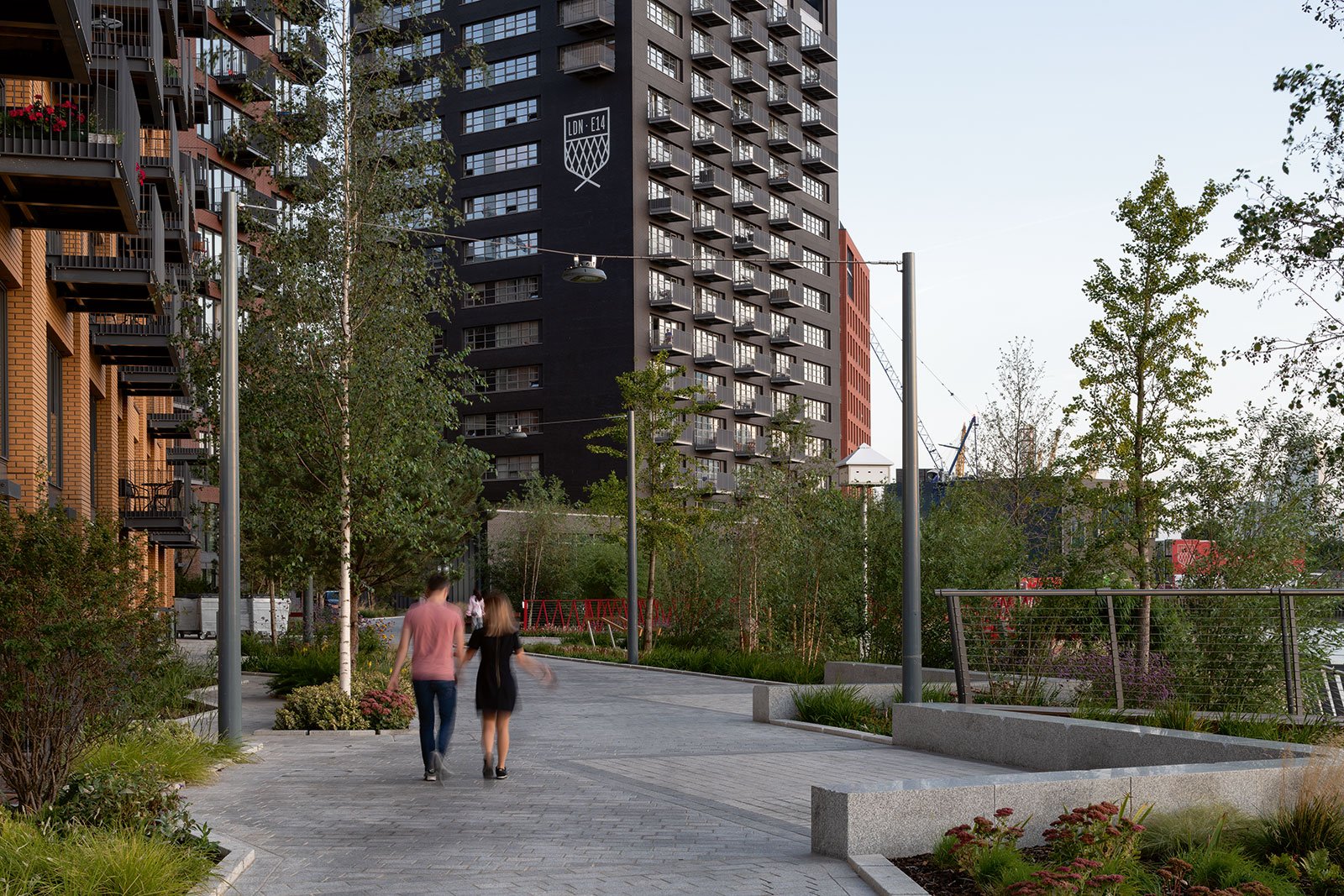
London City Island, UK
EXKLUSIVE LAGE, EXZELLENTES LICHT
Die Metropole London wächst und wächst. Als Reserven für neue Wohn- und Geschäftsquartiere werden ehemalige Docks und Gewerbeflächen erschlossen – so wie London City Island, nur zwei U-Bahnstationen östlich von Canary Wharf. Dort, wo der River Lea kurz vor seiner Mündung in die Themse eine Schleife bildet, entstand auf einer knapp 5 Hektar großen Halbinsel ein attraktives Neubauquartier mit Apartment-Hochhäusern, Geschäften, Grünanlagen und Kultureinrichtungen. Mit Aussicht über den Fluss auf den Millenium Dome plante das Büro Glenn Howells Architects dieses kompakte neue Stadtviertel aus einem Guss – in einer Ästhetik, die sich bewusst auf die industrielle Vergangenheit des Areals bezieht.
Es gelang, das neue Domizil des English National Ballet sowie die London Film School auf diesem „Mikro-Manhattan“ anzusiedeln: Namhafte Institutionen, die ihrerseits ein kulturinteressiertes Publikum anziehen und so das neue Viertel beleben sollen. Da die Halbinsel autofrei bleibt, stehen attraktive, sichere Fußwege, Plätze und Ufergärten im Fokus – gestaltet von den Landschaftsarchitekten des Londoner Büros In-Ex Landscapes. Damit Bewohner und Besucher diese Außenflächen auch abends und nachts gerne nutzen, entwickelten die Lichtplaner von Troup Bywaters + Anders mit Technik von WE-EF ein zeitgemäß nachhaltiges Lichtkonzept.
Durchgängiges Designelement der Wegebeleuchtung sind die runden Leuchten aus dem WE-EF RFL500 Programm. Sie sind aus korrosionsbeständigem Aluminiumguss gefertigt und ausgestattet mit Lichttechnik nach dem OLC® One LED Concept für optimale Lichtlenkung und Entblendung. Mit dem Einsatz entweder als Mastleuchte RFL530 oder als Hängeleuchte RFS530 reagieren die Planer flexibel auf die verschiedenen Raumsituationen und Montagemöglichkeiten. Dabei lieferte WE-EF auch die Masten, Seile und Zubehör zur Aufhängung der Leuchten aus einer Hand. Durch die integrierte Eco Step Dim® Basic Steuerung lässt sich die Helligkeit der Wegebeleuchtung sensor- oder zeitabhängig absenken, um zusätzlich Energie zu sparen. Als klassische, symmetrisch abstrahlende Pollerleuchte wählten die Lichtplaner außerdem die CTY150, die sich mit ihrer klaren zylindrischen Form nahtlos in die architektonische Umgebung einfügt.
Bauherr: EcoWorld Ballymore Raumplanung und Architektur: Glenn Howells Architects, London/Birmingham Landschaftsplanung: In-Ex Landscapes, London Lichtplanung: Zoe Faulkner, Troup Bywaters + Anders, London Elektroinstallation: Lyons Electrical Fotos: James Newton für WE-EF
Loading related products...




